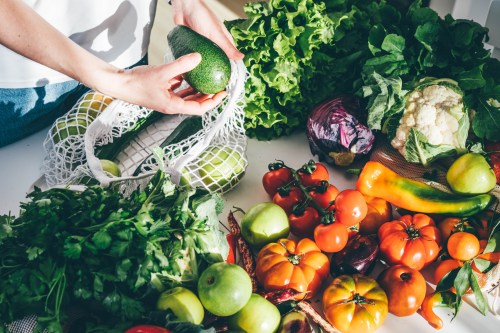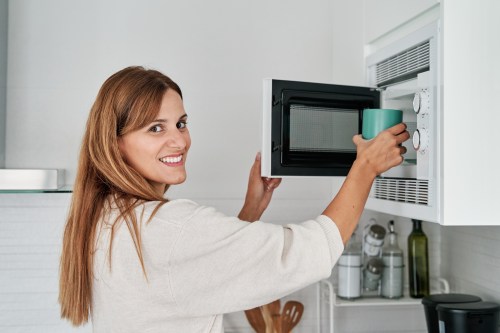Our editors independently select these products. Making a purchase through our links may earn Well+Good a commission
The Founder of a Coffee Company Says This Is How To Make Cold Brew Perfectly at Home
Here's how to make cold brew at home, without creating a mess or winding up with a batcht that's got a weird, bitter aftertaste.

Did anyone else used to think that an adult budget was just like, only buying one coffee per week as a treat and then you’d be able to save enough to own a home? (Thanks, education system, for teaching me nothing useful about managing finances.) And sure, making coffee yourself does save a little bit of money, but to be honest, coffee just tastes better when someone else makes it for you (see also: salad). Until now, that is…because Jordan Karcher, founder of Grounds & Hounds Coffee Co., is about to break down exactly how to make cold brew and iced coffee at home like a pro.
First, let’s chat about the difference between the two because they are not interchangeable. “Though they do seem similar, there is, in my opinion, a substantial difference between cold brew and iced coffee,” Karcher says. Iced coffee is hot coffee served over ice, while cold brew is made by steeping coffee grounds in cold water for 8–24 hours and then straining it to get a concentrate.
Making cold brew in your kitchen is very simple once you know what you’re doing. For starters, Karcher advises against the methods that involve mason jars and cheese cloth because they’re just messy and cumbersome. Instead, he recommends investing in a relatively inexpensive cold brew maker. “This will not only make the process much easier, but the end product will taste significantly better,” he says. “My favorite is the Toddy Cold Brew Maker ($40). The brewer comes with all required brewing accessories, and you will simply need 12 ounces of ground, cold-brew-blend coffee.”
You can also use a French press—fill it halfway with coarse ground coffee, then top it off with cold water and let it steep for 12 hours. “Plunge the French press to filter most grounds and transport the coffee into a vessel for storage and future use,” Karcher says. If you’re still like, that is too much work, you can buy pouches of coffee—like Grounds & Hounds Sunny Spot Cold Brew Pouches ($13)—that you just stick into a pitcher of water and let steep for 12 hours.
Aside from their steeping methods, there are two significant reasons why iced coffee and cold brew taste different. “First, the process of brewing hot coffee results in more acidity (as well as more antioxidants) than cold brew,” Karcher says. Second, when you pour hot coffee over ice, some of the ice melts and dilutes your drink.
Right about now, if you’re thinking: I’ll just wait for my coffee to cool off and then pour it over ice, problem solved, just know that’s going to result in sour coffee in addition to making you wait for it. “Brewing hot coffee extracts quinic acid, which leads to a sour flavor as coffee cools over time. So, by using ‘old hot coffee’ your iced coffee experience will be less than ideal,” Karcher explains.
Another common mistake people make? Opting for iced coffee and not cold brew. (Kidding! Sort of…) “To be honest, I’m not the biggest fan of iced coffee when compared to cold brew, as I do find hot brewed coffee to taste significantly better over ice,” Karcher says. “However, if you are attempting to make the best possible iced coffee, I recommend using a dark roast blend, coarse ground, and brewed using a pour-over device such as a Hario V60,” he says. You’ve gotta make it stronger than usual since the melting ice will dilute it—Karcher recommends using one tablespoon of coffee for every three ounces of water. “Then simply brew the coffee directly over a tall glass filled with ice and leave around 2-½ inches of room to add fresh ice and any creamer desired.” You’ll feel like a bonafide barista before you know it.
Oh hi! You look like someone who loves free workouts, discounts for cult-fave wellness brands, and exclusive Well+Good content. Sign up for Well+, our online community of wellness insiders, and unlock your rewards instantly.
Sign Up for Our Daily Newsletter
Get all the latest in wellness, trends, food, fitness, beauty, and more delivered right to your inbox.
Got it, you've been added to our email list.










